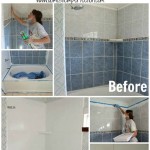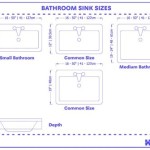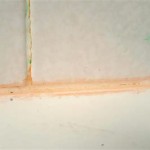Rustic Style Bathroom Ideas: Bringing Nature Indoors
The rustic style, characterized by its natural materials, handcrafted elements, and emphasis on warmth and comfort, has become a popular choice for bathroom design. Integrating rustic elements into a bathroom creates a space that feels inviting, relaxing, and connected to the outdoors. This article explores various ideas for achieving a rustic aesthetic within a bathroom setting, focusing on key components and design principles. The goal is to offer practical insights into how to incorporate natural textures, earthy tones, and vintage elements to transform a bathroom into a tranquil retreat.
Key Elements of Rustic Bathroom Design
Rustic bathroom design revolves around several core elements that define the overall aesthetic. These elements work together to create a cohesive and inviting space that reflects the essence of nature and simpler times. Understanding these elements is crucial for planning and executing a successful rustic bathroom renovation or upgrade.
Natural Materials: The cornerstone of rustic design is the extensive use of natural materials. Wood, stone, and metal feature prominently. Wood is often used for vanities, shelving, and accent walls, preferably with a visible grain and a slightly distressed finish. Stone can be incorporated through flooring, shower walls, or even a natural stone sink. Metal accents, such as wrought iron or copper, add a touch of industrial charm and complement the natural textures. The key is to choose materials that feel authentic and unrefined.
Earthy Color Palette: The color scheme for a rustic bathroom should be inspired by nature. Earthy tones such as browns, greens, grays, and creams create a serene and calming atmosphere. These colors can be used on walls, tiles, and accessories. Lighter shades can brighten the space, while darker hues can add depth and warmth. Accents of muted blues or yellows can introduce subtle pops of color without disrupting the overall natural feel. It is important to maintain a balance and avoid overly bright or artificial colors that clash with the rustic aesthetic.
Texture and Patina: Texture plays a vital role in creating a rustic ambiance. Rough-hewn wood, textured tiles, and woven baskets add depth and visual interest. A patina, the natural aging and wear on materials, is also highly desirable. Reclaimed wood with imperfections and aged metal fixtures contribute to the authentic rustic feel. Intentionally incorporating imperfect elements, rather than striving for pristine perfection, is essential to achieving a truly rustic look.
Vintage and Antique Accents: Incorporating vintage or antique pieces adds character and history to the rustic bathroom. Repurposed furniture, such as an old dresser transformed into a vanity, can serve as a focal point. Antique mirrors, vintage light fixtures, and reclaimed hardware further enhance the rustic charm. The use of items that have a story to tell contributes to the overall sense of warmth and nostalgia.
Practical Ideas for Incorporating Rustic Elements
Transforming a standard bathroom into a rustic oasis requires careful planning and the strategic incorporation of rustic design elements. Here are some specific ideas for different areas of the bathroom:
Vanity Area: The vanity is often the focal point of the bathroom, making it a prime area for showcasing rustic style. A custom-built vanity made from reclaimed wood provides a unique and visually appealing element. Alternatively, an antique dresser can be repurposed as a vanity, adding a touch of vintage charm. A vessel sink made from natural stone or copper complements the rustic vanity. Consider using wrought iron faucets and cabinet hardware to complete the look. Open shelving instead of closed cabinets allows for displaying natural elements like woven baskets and rolled towels.
Shower and Bath: The shower and bath area offers numerous opportunities for incorporating rustic elements. Stone or wood-look tiles can create a natural and earthy backdrop. A rainfall showerhead with an oil-rubbed bronze finish adds a touch of luxury while staying true to the rustic aesthetic. A freestanding soaking tub with claw feet provides a classic and elegant touch. For added privacy and visual interest, consider using a reclaimed wood shower screen or adding a natural stone accent wall.
Flooring: The flooring plays a significant role in defining the overall rustic aesthetic. Natural stone tiles, such as slate or travertine, provide a durable and visually appealing option. Wood-look tiles are a practical alternative that offers the beauty of wood with the water resistance required for a bathroom. Wide plank wood flooring, treated for water resistance, can create a seamless transition from the adjacent rooms. Area rugs made from natural fibers, such as jute or sisal, add warmth and texture to the space.
Lighting: Lighting is crucial for creating the right ambiance in a rustic bathroom. Warm, natural light is ideal. Incorporate a combination of ambient, task, and accent lighting to achieve a well-lit and inviting space. Vintage-style sconces and pendant lights with Edison bulbs provide a warm and nostalgic glow. Consider using dimmers to adjust the lighting to create different moods. Natural light should be maximized by using large windows or skylights, if possible. Avoid harsh fluorescent lighting, which can detract from the rustic aesthetic.
Accessories and Decor: The finishing touches are essential for completing the rustic bathroom design. Woven baskets can be used for storage and organization. Mason jars can be repurposed as soap dispensers or toothbrush holders. Display natural elements such as branches, stones, and dried flowers. Hang a vintage mirror or a piece of reclaimed wood art to add character to the walls. Use plush towels made from natural fibers, such as cotton or linen. A small wooden stool or bench provides a practical and decorative element. The key is to choose accessories that complement the natural and earthy tones of the bathroom.
Considerations for Implementing Rustic Bathroom Design
Successfully implementing a rustic bathroom design requires careful consideration of several factors, including budget, space limitations, and personal preferences.
Budget: Rustic bathroom design can range from budget-friendly to high-end, depending on the materials and fixtures chosen. Reclaimed materials and DIY projects can help to reduce costs. Prioritizing key elements, such as the vanity and flooring, can ensure that the most impactful aspects of the design are within budget. Shopping for vintage or antique pieces at flea markets or online marketplaces can also save money. Planning the budget meticulously and sticking to it is crucial for a successful renovation.
Space Limitations: Rustic design can be adapted to bathrooms of any size. In smaller bathrooms, it is important to maximize space and avoid clutter. Utilizing vertical space with shelving and storage baskets can help to keep the space organized. Choosing smaller-scale fixtures and furniture can prevent the bathroom from feeling cramped. In larger bathrooms, there is more freedom to incorporate larger pieces and create distinct zones for different functions.
Maintenance: Natural materials, such as wood and stone, require regular maintenance to prevent damage and maintain their beauty. Sealing wood surfaces and stone tiles can protect them from water damage and stains. Regularly cleaning and dusting the bathroom can prevent the buildup of mold and mildew. Choosing durable and water-resistant materials can reduce the amount of maintenance required. Incorporating proper ventilation can also help to prevent moisture-related problems.
Personal Preferences: While adhering to the core principles of rustic design, it is important to incorporate personal preferences and style. This can be achieved by choosing specific colors, textures, and accessories that reflect individual tastes. Adding personal touches, such as family heirlooms or handcrafted items, can make the bathroom feel more unique and inviting. The goal is to create a space that feels both rustic and personal.
By carefully considering these factors and implementing the ideas outlined above, it is possible to transform any bathroom into a tranquil and inviting rustic retreat. The beauty of rustic design lies in its ability to create a space that feels both natural and comfortable, offering a welcome escape from the stresses of modern life.

Rustic Bathroom Ideas Forbes Home

Tips For Designing A Rustic Style Bathroom

40 Rustic Bathroom Designs Decoholic House Bathrooms

17 Rustic Bathroom Ideas

Rustic Bathroom Ideas Forbes Home

64 Rustic Bathroom Ideas Calm Relaxing Cool Bathrooms

Your Guide To A Rustic Style Bathroom

47 Rustic Bathroom Decor Ideas Modern Designs

Aquietcottagelife Rustic Bathroom Designs Bathrooms House

Rustic Bathroom Ideas That Will Blow Your Mind
Related Posts







